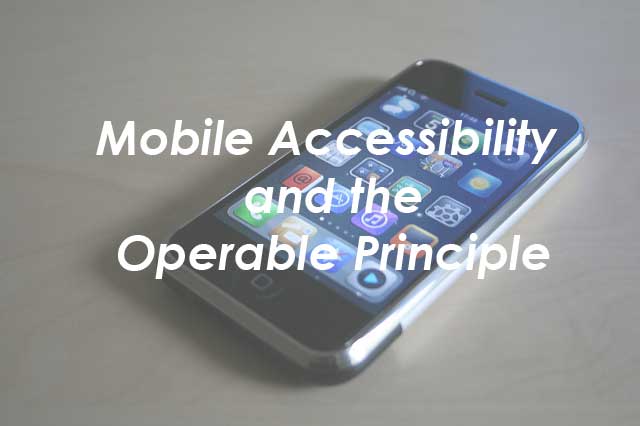The W3C wants to help developers understand how WCAG 2.0 applies on mobile devices. They recently issued the first working draft on the topic. The guidelines and principles of WCAG are explained using the POUR method: Perceivable, Operable, Understandable, Robust.
In this post I will distill the W3C information on the Operable principle.
Touch Target Size and Spacing
- touch targets should be at least 9 mm high by 9 mm wide
- touch targets close to the minimum size should be surrounded by a small amount of inactive space
Touchscreen Gestures
- Gestures should be as easy as possible to carry out and two-step gestures should be avoided
- To prevent unintentional actions, “elements accessed via touch interaction should generally trigger an event (e.g. navigation, submits) only when the touchend event is fired (i.e. when all of the following are true: the user has lifted the finger off the screen, the last position of the finger is inside the actionable element, and the last position of the finger equals the position at touchstart).”
Device Manipulation Gestures
These suggestions are for manipulations such as shaking or tilting:
- Developers should still provide touch and keyboard operable alternative control options
- Provide onscreen indicators that remind people how and when to use device manipulation gestures
Button Placement
- Place interactive elements where they can be easily reached when the device is held in different positions or by different hands
- Flexible use is the goal
Mobile device image: William Hook
